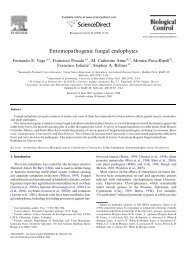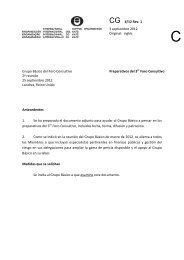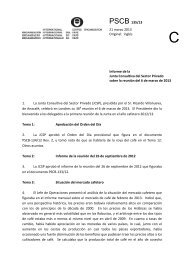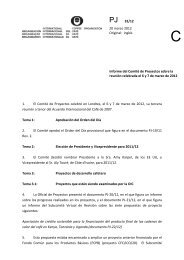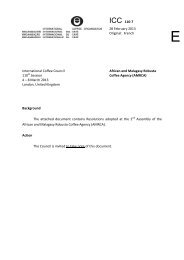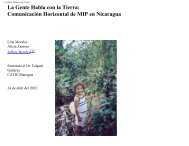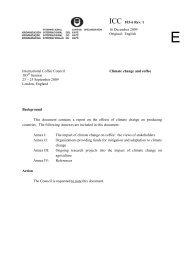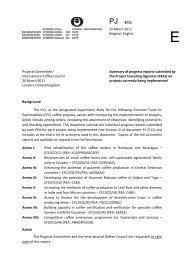Devouring profit - International Coffee Organization
Devouring profit - International Coffee Organization
Devouring profit - International Coffee Organization
You also want an ePaper? Increase the reach of your titles
YUMPU automatically turns print PDFs into web optimized ePapers that Google loves.
68<br />
6.5 Rural wages<br />
Since CBB control largely depends on cultural control and cultural control depends on<br />
labour, this factor should play an important role when analysing how farmers can afford<br />
to intensify this control measure or not. Table 29 describes the rural wages paid when<br />
controlling CBB.<br />
Table 29. Average rural wage in countries visited (2001<br />
prices).<br />
From the table, it is clear that rural wages are highest in Colombia and lowest in India.<br />
This we believe might be an important factor in farmers’ approach to CBB control.<br />
6.6 Generating hypotheses on<br />
factors favouring CBB control<br />
From the concepts mentioned above and the possible interactions between them, we<br />
can start to pose some hypotheses to guide us in development of CBB management<br />
in relation to broader issues of the coffee industry in producer countries. What follows<br />
is based on our visits and examination of the available data, it is an exercise in hypothesis<br />
generation rather than a statement of fact. On the following graphs, lines depict<br />
our hypotheses and country names our estimation of the true position in these countries.<br />
Hypothesis 1: there is a direct relationship between the state of the internal coffee<br />
market and the level of CBB management. We believe that if quality were rewarded<br />
at the farm-gate, coffee farmers would have more interest in controlling CBB. We<br />
suggest, from our in-country studies that the current situation can be approximated by<br />
Figure 15.<br />
Hypothesis 2: there is an inverse relationship between the degree of diversification of<br />
the farm and intensity of CBB management. Ellis (2000) indicates that there are several<br />
determinants for livelihood diversification such as seasonality in income, coping<br />
and risk attitudes, labour markets, etc., which are all ways of facing difficulties involved<br />
in agricultural production. Figure 16 shows our assessment of the status of<br />
within-farm diversification for the countries studied.




